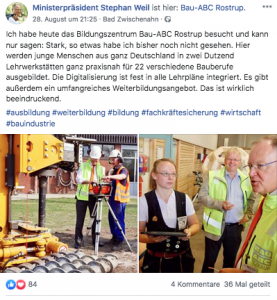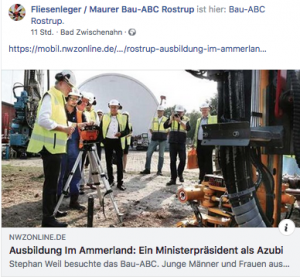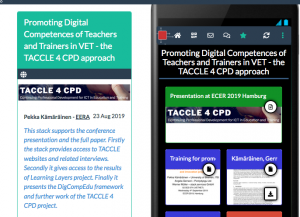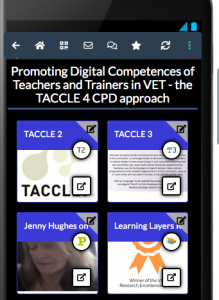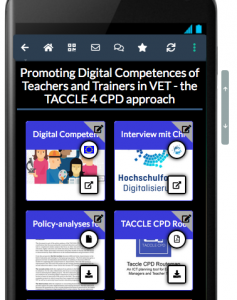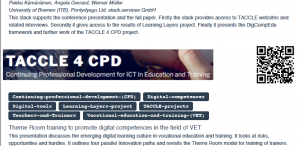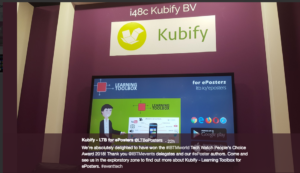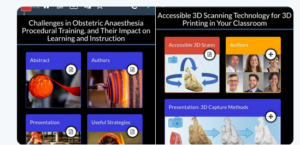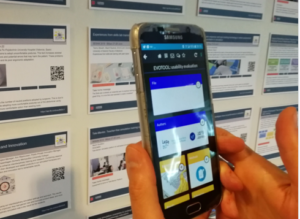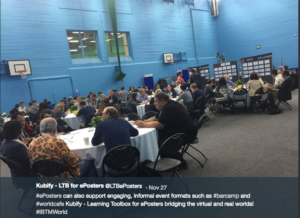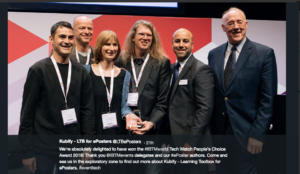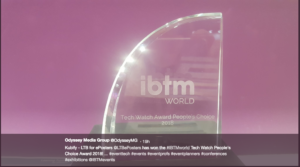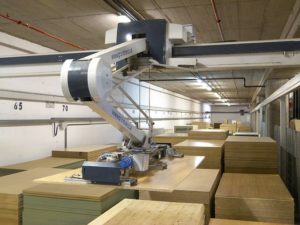During the summer months it has not been possible to report much on the fieldwork for the Learning Layers (LL) project. Due to the holiday periods there have been no major events. Yet, thanks to the efforts in May and June and due to preparatory measures by several colleagues, we have been able to take several steps forward when coming back from holidays and conference trips. In this first post I will give a report on the LL partners’ visit to the German construction fair NordBau that took place yesterday.
The annual NordBau fair in Neumünster, near Hamburg, is the biggest sectoral fair for construction industry and craft trades in North Germany. The exhibition halls present products, tools and services whilst the large outdoor areas are filled with heavy machinery by all major suppliers. Bau-ABC is a regular visitor and this event has served as a major opportunity for contacting suppliers and cooperation partners. This time we decided that Melanie Campbell, Kerstin Engraf and I will make a one-day-visit to join the trainers – Mr Grewe and Mr Schütte, who were attending the whole time. We agreed that we three will first explore the exhibition area of ICT service providers and then join Mr Grewe and Mr Schütte with their talks with the suppliers.
1. Observations in the exhibition area of ICT service providers
We were interested to find out, to what extent the ICT service providers were presenting services for construction workers and their supervisors in the construction sites – based on mobile devices. From this point of view the general picture was far more traditional – most of the exhibitors were presenting CAD/CAM software for design work or business management software . Very few exhibitors were promoting mobile applications – and they also were primarily addressing architects or business managers. Yet, we got brochures from some software providers to have a closer look from the LL perspective.
A special compartment was the BIM exhibition container (Building Information Modelling) that was provided by a German research project consortium. involving several universities and software developers. The project demonstrated use of RFID-technologies and integrated software solutions with which the modelling covers the whole supply chain. Starting from product design and actual production (adjusted to customer needs), following through the logistic chain (including reporting, tracking and quality control) the software solutions gave information to the point of using the products in the construction project (and reporting of good match or eventual mismatches). Here, the emphasis was on integration of software and different steering/controlling technologies. From the LL point of view it was interesting to note that this project had been working with prototype solutions without involvement of real application partners and that the engagement of real users was seen as a task for different spin-off and follow-up projects.
2. Talks with supplier companies
The second part of our visit consisted of short visits and stakeholder talks in the outdoor areas in which suppliers to construction companies were presenting their machinery and equipments. Altogether we visited the areas of the following supplier companies:
- Liebherr
- Wirtgen Group
- TractoTechnik
- Vetter GmbH Kabelverlegetechnik
- Tramann + Sohn
- Wacker Neuson
These visits had been orchestrated and scheduled by Mr Grewe and they were part of his normal agenda for meeting suppliers to make arrangements for cooperation in training users of such machinery in the context of initial and continuing training programmes. This time, however, during most of these visits we had discussions also on the Learning Layers project and in particular on the Learning Toolbox. To me it was important that the colleagues from Bau-ABC had already integrated the promotion of Learning Toolbox (and engagement of their partner companies) to their normal business talks. Also, in these talks the colleagues from Bau-ABC were very attentive concerning the possible benefits that the company representatives could see (and very convincing in eliminating eventual misunderstandings). Yet, it was clear to all of us that our counterparts in these talks were the sales persons (and only in few cases the managers/owners of the companies). Thus, the agreements on subsequent pilot workshops were to be made with the management representatives.
At the end of the day we could conclude that our visit was well-timed and that we got good feedback regarding the Learning Layers project:
- Concerning the ICT exhibition area and the BIM projects, we noticed that there is a gap in providing services for construction workers on the site and in engaging them in co-design processes. From this perspective both the task of the LL project and its approach can be seen as pioneering work.
- Concerning the talks with the supplier companies, the colleagues from Bau-ABC demonstrated clearly that they had integrated the promotion of Learning Toolbox (and engagement of partner companies into pilot activities) as an essential part of their cooperation with business partners.
Also, the fact that such cooperation is valued became clear during our chance meeting with the team from the company W. (who had just participated in a pilot workshop on Learning Toolbox – see my next blog). So, we felt very much empowered and are looking forward to the next steps.
More blogs to come …
